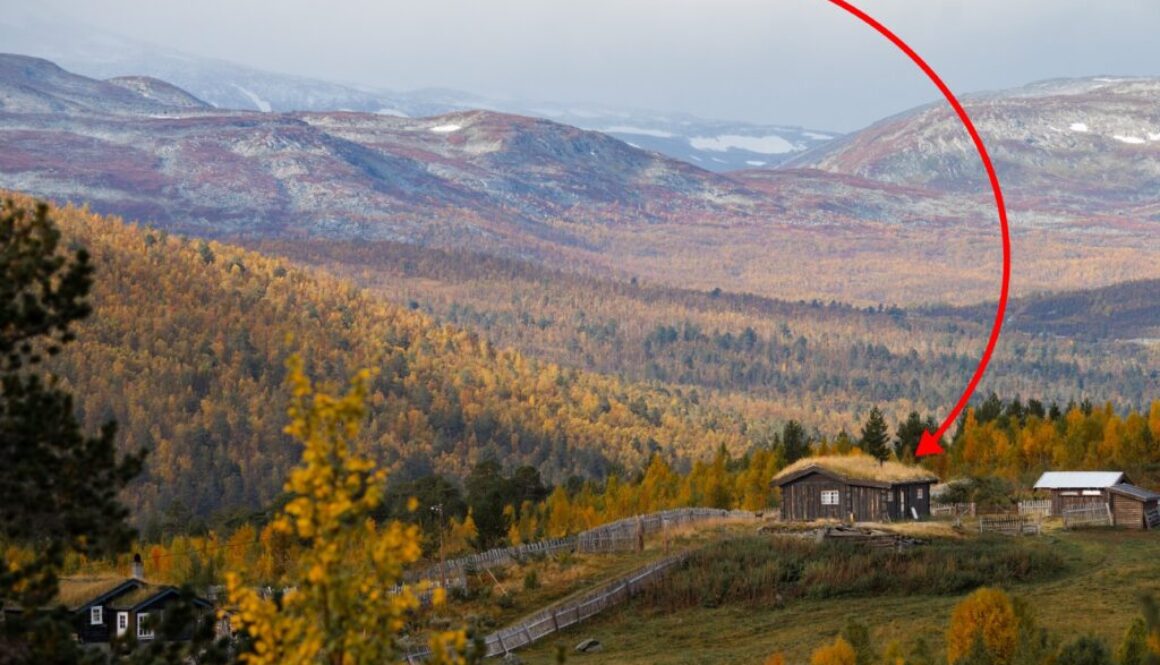10 edible plants in food shortages
[B]EAT inflation

As always, if you prefer watching this as a video, it’s linked at the bottom of the page.
It has always been useful to know your natural environment. But now, in times of potential food shortages and higher prices, it could be vital to know which plants you can eat and which ones you should better leave where they are.
So today, we’re going to work our way through ten edibles that not only keep you full and healthy but also from spending half your salary on spinach and avocado.
Useful Rules
- Always make sure to be 100% sure to identify correctly before eating any wild plants.
- If it’s your first try, only consume one species at a time. That way you can rule out food allergies and see which plants have a future in your meal plan.
Ground Elder (Aegopodium podagraria)

We are starting with one of the most abundant plants around. Ground Elder. If you ever walked along the woodland border, parks, or pretty much every somewhat natural garden, the chances are high that you came across the extensive ground-covering green plant with white, elder-like flowers.
Ground elder grows in clusters and has serrated leaves that are light green when young and turn dark as they age (see above).
More often than not, you find it in places where you don’t want it. Growing at a speed that makes weeding nearly impossible. Though you can still surrender and make use of the abundant food source.
The leaves, stems, flowers, and seeds are edible but I have been sticking to only the younger leaves which are high in Vit C, much more palatable, and easy to integrate into a variety of meals.
With a parsley-like, lemon-ish taste when consumed raw and spinach similarities when cooked you can use ground elder in pretty much every dish from omelet and frittata to soups and salads.
The growth of this plant is so fast that it is hard ever to run out! You can harvest it all the way from early spring to autumn.
PS: I have not yet found out if it’s possible to preserve it frozen.
Dandelion (Taraxacum officinale)

Number two is dandelion. This garden regular is another, barely used source of food. In fact, people tend to hate it for its vast reproduction rate.
The shoots of long, toothy leaves and flower stem with the characteristic yellow flower buds appear early in the year and are one of the first food sources in spring.
You can eat the leaves, stem, and flowers, and even make a coffee-like beverage if you roast the roots. In terms of palatability, it’s a harder nut to crack. Done right, it’s a valuable source of magnesium and potassium as the deep roots are especially capable of extracting it from the soil.
The leaves, even the young ones are god damn bitter and it’s quite hard to consume it in larger quantities raw. Well, you can stadd a few of the youngest leaves to salads. If you would like to get rid of the bitterness in the larger leaves, boil them in salt water for a few minutes. After that, they should be ready to be used in similar ways as spinach.
Bush Vetch (Vicia Sepium)

With the bush vetch, we are leaving parts of the known territory. Nonetheless, walking past natural fields, you will find a large abundance of this plant using grass and other fast growers as a ladder to sunlight.
The bush vetch comes with leaves that are parted in 4–8 smaller pairs of leaflets and clusters of 2–6 purple-ish flowers.
Technically, you can eat the freshest leaf shoots, the flowers, and young peas but I wouldn’t recommend eating the peas unless you are 100% of your identification with how to treat these seeds once harvested to render them edible.
Yet, the youngest leaves are rather tasty and come quite close to eating peas. Small amounts of that together with the flowers can upgrade one or other salad through the season. As long as you make sure not to eat it in bulk, you should be on the safe side!
Japanese Knotweed (Reynoutria japonica)

Moving to larger plants, Japanese knotweed is always a good idea for a snack! The bamboo-like invasive species is growing with immense speed and is often blacklisted as a thread for native fauna. Nevertheless, it’s growing in your garden or in places you are sure of no herbicide use, it is quite delicious once you get used to it.
Japanese Knotweed is growing very tall and with its bamboo-like stem and shovel-shaped leaves is one of the easier plants to identify.
The young shoots, up until 30 cm in length and the last 10 cm of the growing plant are tender enough to be consumed raw and had a rhubarb-lemony-like taste, and can be used in pretty much every way you would use rhubarb in cakes.
As the knotweed contains a fair amount of oxalic acid, it could be wise not to go all out on it despite the abundance of usable plants.
Red Clover (Trifolium pratense)

Our plant number five is one you may remember from childhood, Red Clover. These flowers are rather popular due to their sweet nectar.
The trifoliate leaves with the characteristic white crescent set the clover apart from many plants. And in addition, the purple, pink or creamy white flowers are very hard to overlook.
Although the leaves on their own do only slightly taste like peas, they can still be used in salads as a filler.The flower on the contrary with all its nectar is rather pleasant in taste and will not only culinary but also visually enhance many meals. They and the leaves can be eaten raw without further worries.
In emergencies, the flowers can be dried and ground into a flour-like substance.
Greater Plantain (Plantago major)

Whenever walking along a tractor road or just your ordinary pavements, you may have noticed endless flower spikes (also called rat tails) of persistent thick-leaved plants. These guys are called plantains and as long as you are sure that they were not treated with any herbi- or pesticides, they are edible.
Young leave are to be preferred as the older they get the bitterness level rises and they tend to get stringy. Greater plantains come with similar features as dandelion and in my opinion, should be treated similarly to reduce bitterness. Either by short cooking or sauteing. Once the bitterness is gone, you find yourself another spinach substitute.
There seem to be indices of anti-inflammatory properties and chewed leaves can have soothing effects on skin irritations like mosquito bites and rashes. Well, if you prefer to drink your benefits, you could dry the leaves, grind them and use them as tea.
Consumed in large amounts plantains can lead to bowel irritations, so go easy on them.
Cleavers (Galium aparine)

If you had access to the seaside and had some sense of humor as a child, you will know cleavers. The sticky plant is more than just fun to be thrown around! It can be used for all sorts of dishes and is so abundant that I would call it the dandelion of the beach.
The square stem, upward pointing leaves, and cover with fine hair are easy identifiers. If the plant you found sticks to your clothing, you are on the right path!
Leaves and stem can be used as food, although the fine hair can be irritating to some. Especially the youngest parts doing very well in salads.
To be honest here, these guys aren’t my favorite but boiled or blended in soups they are doable! It all depends on how hungry you are.
Spear-leaved Orache (Atriplex prostrata prostratra)

We stay at the beach and have a look at a plant that often grows within cleavers or at least is never far away spear-leafed oraches. A plant is also more on the exotic end of the usage scale.
Spear-leafed oraches like beaches and often grow on rotting seaweed. The red-tinted stem and spear-shaped leaves are helpful features for identification.
Young stems and leaves are edible and come with a unique sweet and salty taste you can sparely add to salads. However, they become more palatable if you boil them, discard the water and then treat them like spinach or other members of the kale family.
Like Japanese knotweed, oraches contain oxalic acid and if harvested close to fertilized field high amount of nitrate. Less is more of this one.
Curly dock (Rumex crispus)

Let’s stick with the oxalic acid and have a lock at another, very tasty wild edible, curly dock also known as yellow dock.
Hairless, veiny leaves are common to all varieties in the dock family. Yet, the ruffled, curly edges of the specimen make it much easier to identify. Curly dock can grow quite tall but you should better stick to the younger leaves that taste somewhere between rhubarb and spinach as the older ones are rather bitter.
We already clarified that this plant is for sporadic use only but if it’s time for a curly dock meal, stir-frying or adding them to an omelet is a great idea.
There are rumors that the roots could be potato substitutes but I’m not having any experience with that.
Spruce (Picea abies)

The last and tenth candidate is also our first tree, the Norway spruce. The evergreen, not to be confused with pines and firs comes with a variety of uses and is even referred to as nordic rosemary.
When it comes to some substantial food, spring is the only time to make use of it. Young shoots are bright green, abundant, and fully edible. The taste is sour forest and it takes a while to get used to it. When there are very young cones, try roasting them in the oven, the inner parts are edible.
Yet they are very high in vitamin C! If you, for any reason missed the spring, no worries. The spruce keeps on giving year-round. You can still use the needles to make great tea.










































